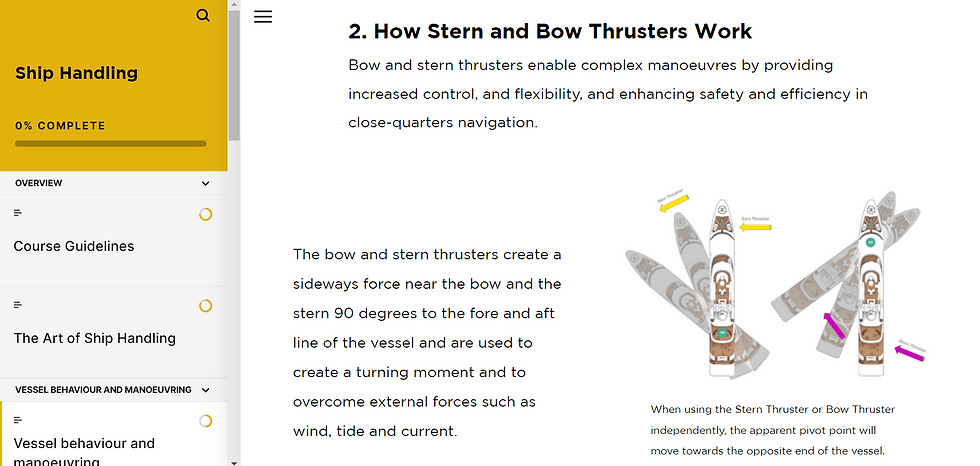Navigating Digital Learning and Learner Engagement in Maritime: Learning in the Age of Maritime Innovation
- Sam Carless

- Jan 29, 2024
- 2 min read
Updated: Feb 8, 2024
Having worked in learning design for over 15 years, it's only in the last year, while working with Kilo Solutions, that I've had the opportunity to focus my efforts on the maritime industry. In a world where technology is advancing faster than ever before (hello AI, AR, VR...), it is abundantly clear that the change happening is not sparing this ancient profession. It's been enlightening to see how much technology is transforming the maritime industry.
Challenges Faced by Seafarers
Technological innovations and evolving regulations are profoundly transforming the maritime industry. Seafarers face immense challenges adapting to these new advances and regulations. They must master cutting-edge digital systems and innovations alongside traditional maritime skills. All while regulations are constantly changing, requiring continuous certification, and training. For those who spend months away at sea, staying current with skills and knowledge can be difficult.
Performance-Aligned Digital Learning for Maritime
Digital learning has become essential providing flexibility, accessibility, and guidance for seafarers toward the knowledge and skills required to navigate the ever-evolving challenges of their profession. In turn, helping them meet their new performance needs in a dynamic landscape where staying updated on the latest tech is crucial for the safety and efficiency of their vessels.
With the right interactive content on mobile-friendly platforms, we can design digital learning experiences that are engaging and practical. The material comes alive with simulations, quizzes, and real-world case studies. Available on-demand, digital learning can happen anytime, anywhere – ideal for unpredictable maritime schedules.

By blending online and in-person training we can provide the industry with the best of both worlds. Allowing for hands-on training during port stops and leveraging immersive technologies like virtual reality (VR) and augmented reality (AR) for realistic scenario simulations, at a time and place of their choosing. Central to this strategy is an unwavering commitment to safety. Learning materials prioritise safety protocols, emergency procedures, and best practices, recognising the paramount importance of safety in the maritime world.
Designing for Maritime: A Unique Approach
Considering the maritime world's cultural diversity, accessibility takes centre stage. A thoughtful approach ensures that learning materials cater to the linguistic and cultural nuances of diverse crews.
Staying on top of emerging technologies is crucial for designing experiences that meet the maritime industry’s unique needs. Beyond foundational knowledge, the learning journey extends to professional development. Leadership material offers avenues for continuous improvement and growth, nurturing seafarers' skills and ambitions as they navigate their course to success on the open seas.
As part of Kilo Solutions, I am seeing first-hand the practical application of knowledge using the latest technologies on offer. A thought leader in the practical application of VR, Kilo use VASCO to leverage the knowledge and principles gained from digital learning and assess practical skills.
Designing digital learning strategies for the maritime industry that meet the unique needs of seafarers is an exciting challenge. Blending the old and new through technology gives seafarers all the tools they need to take on the oceans confidently and safely!
What are your thoughts? I'm always happy to chat about the future of learning design!




Comments